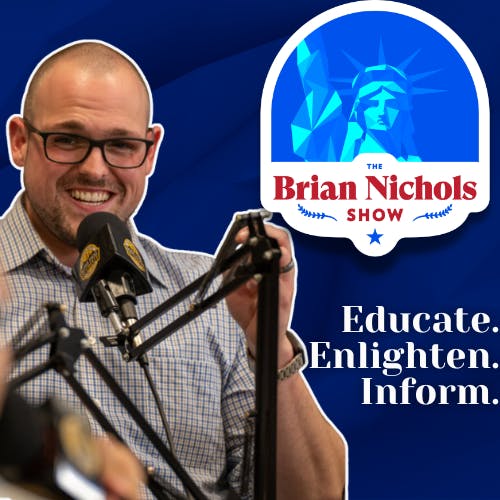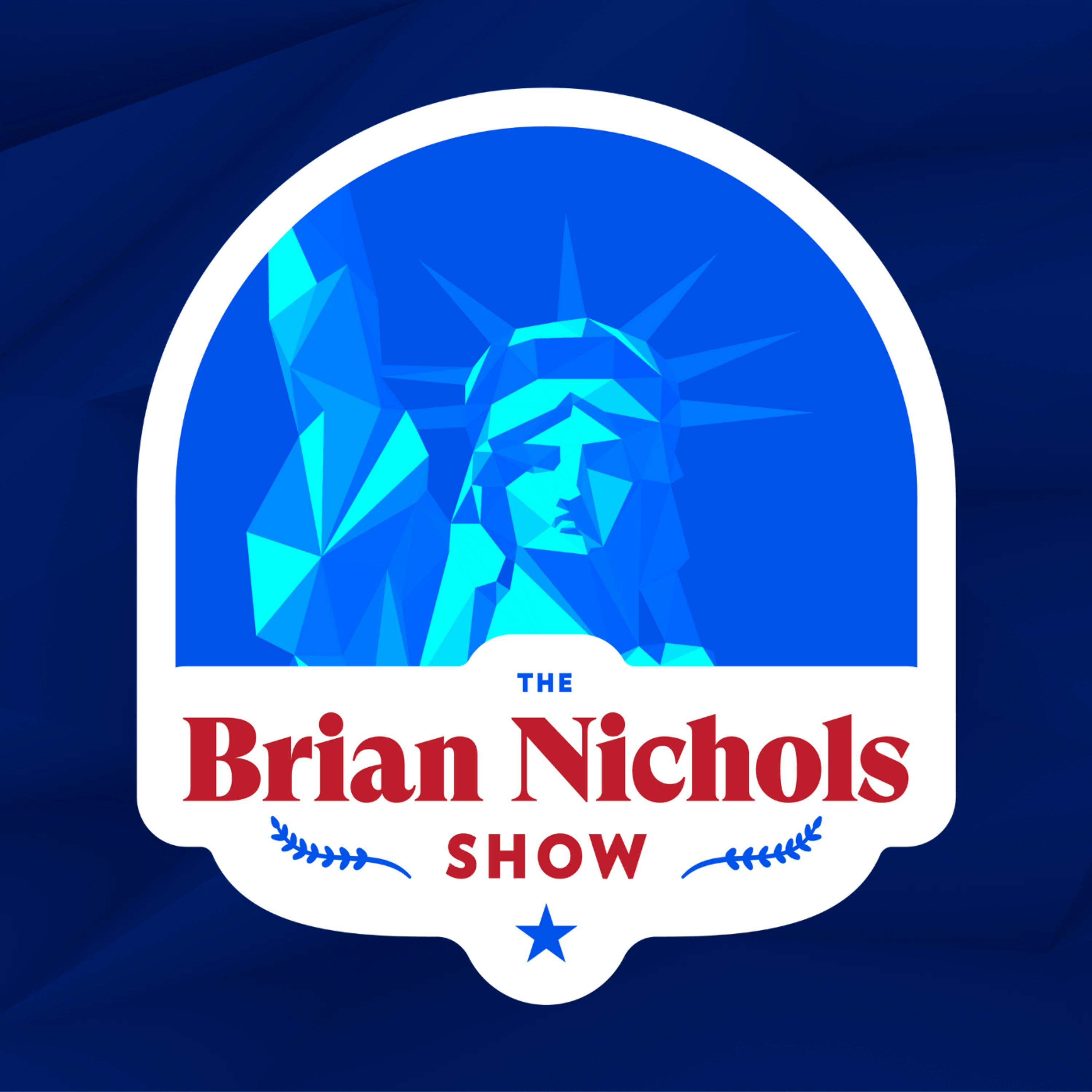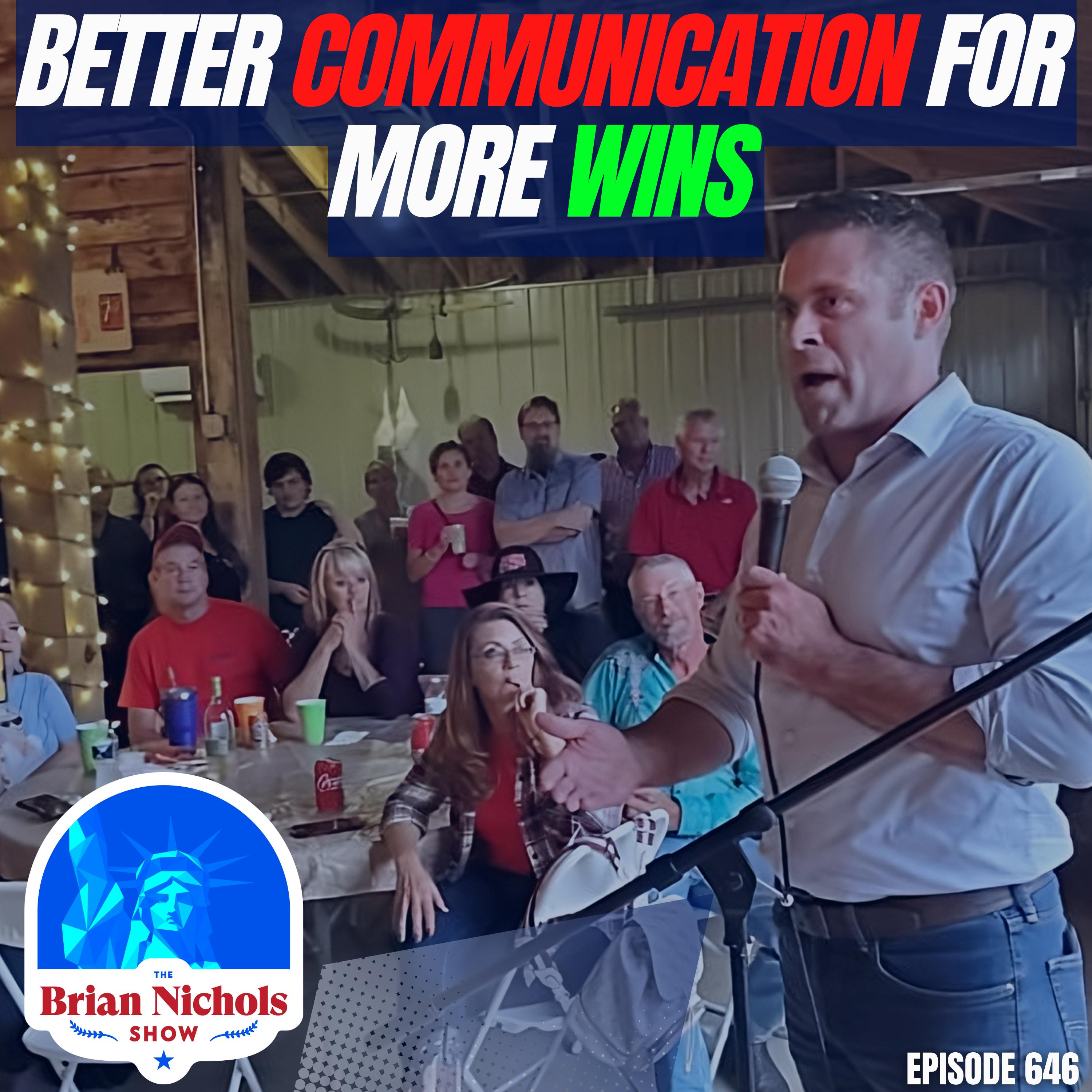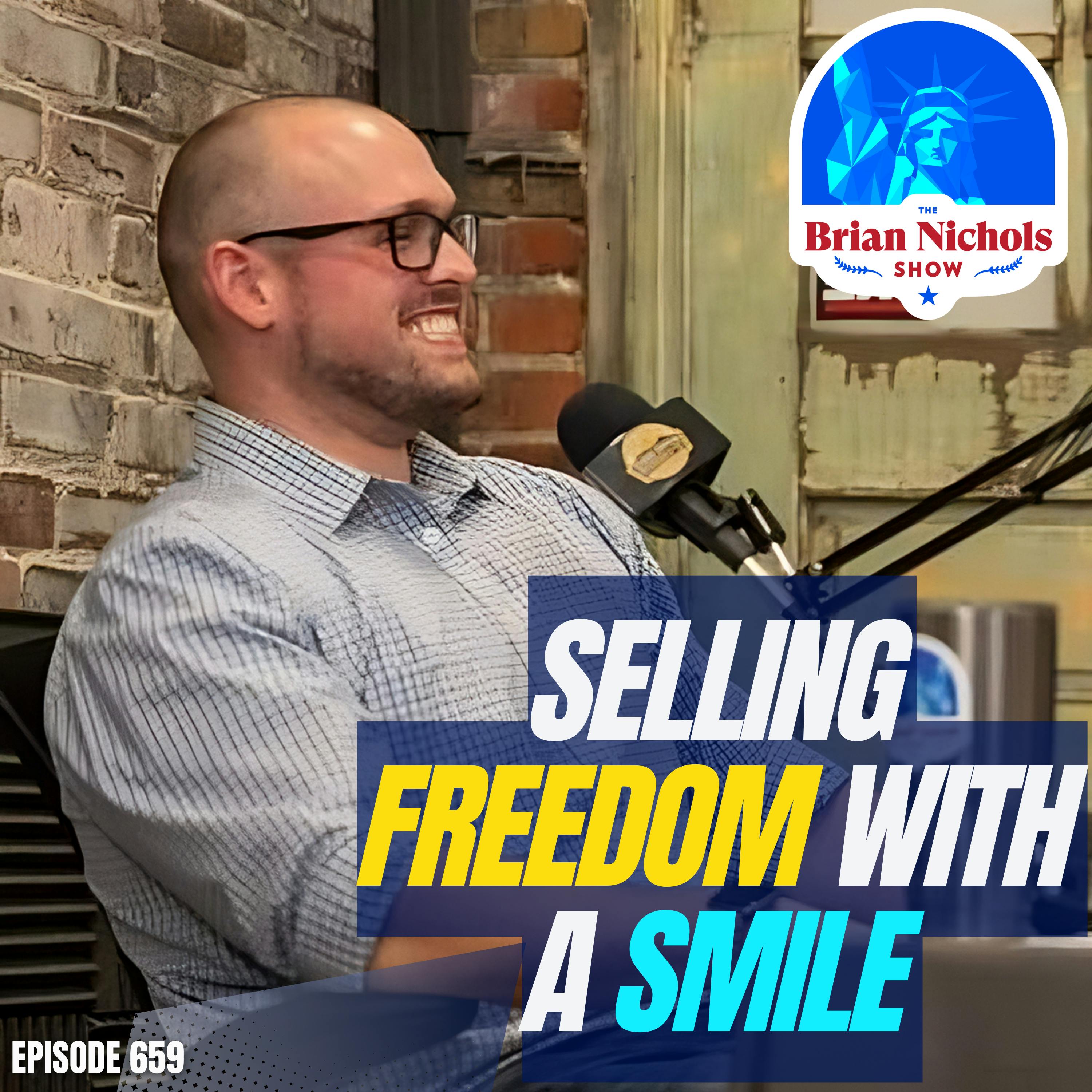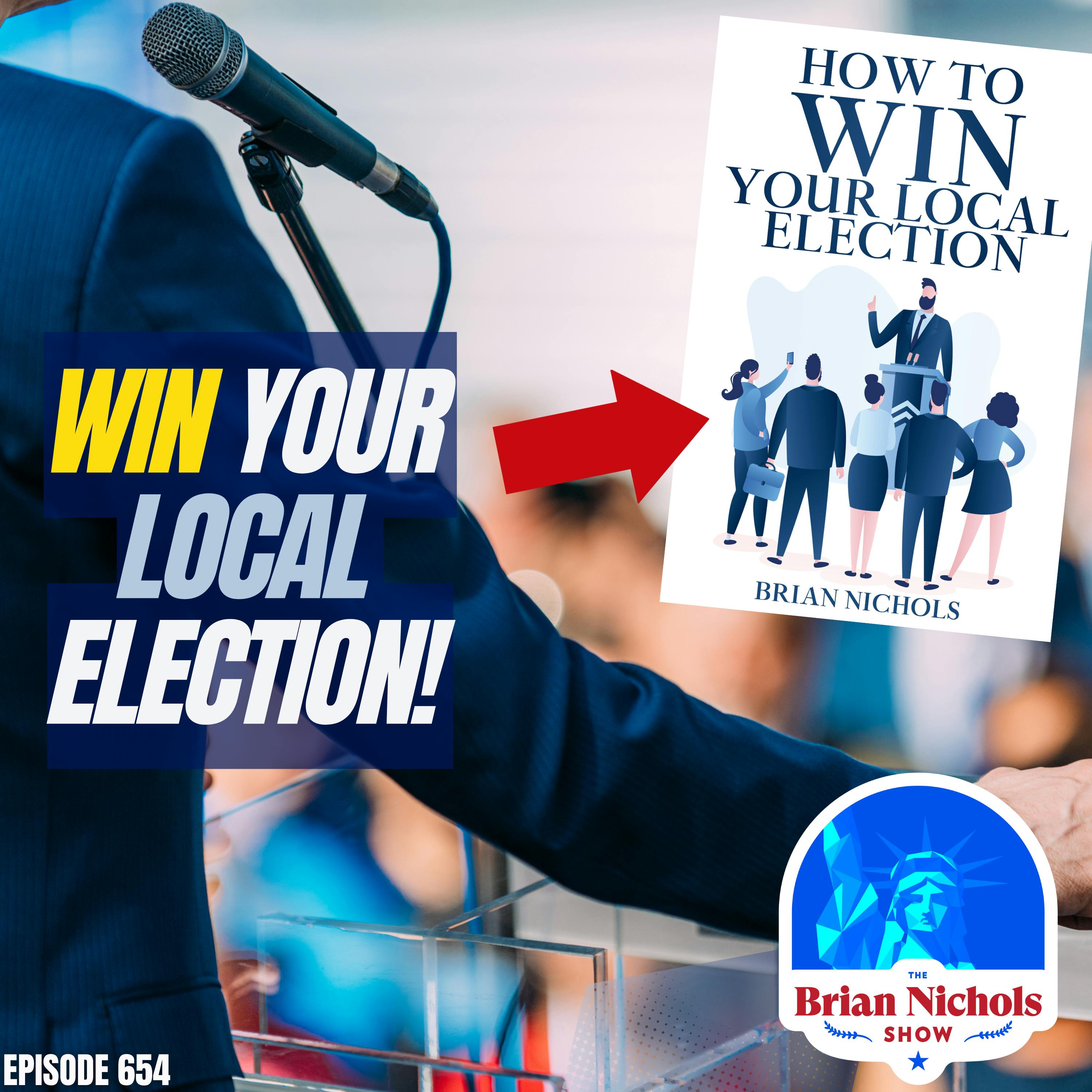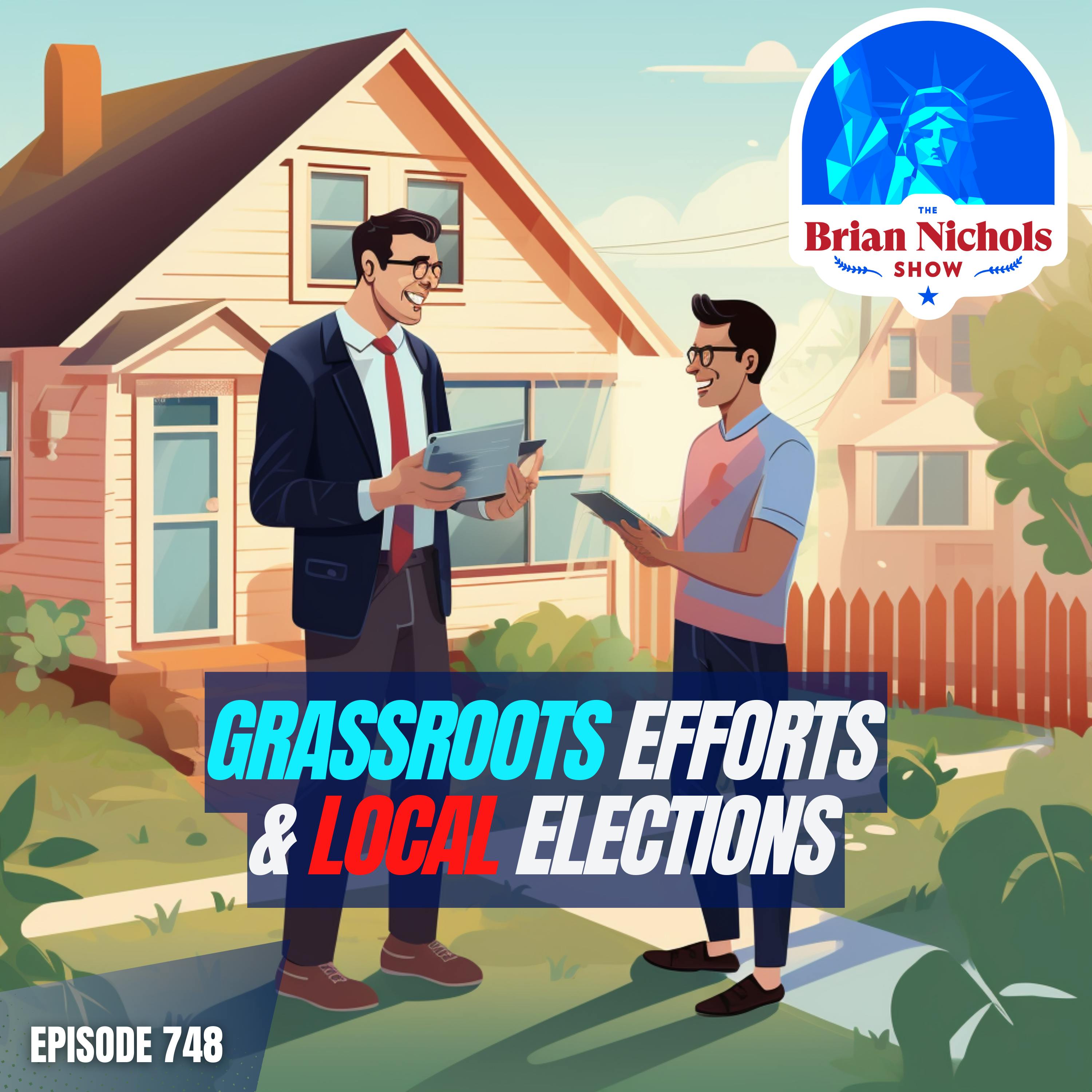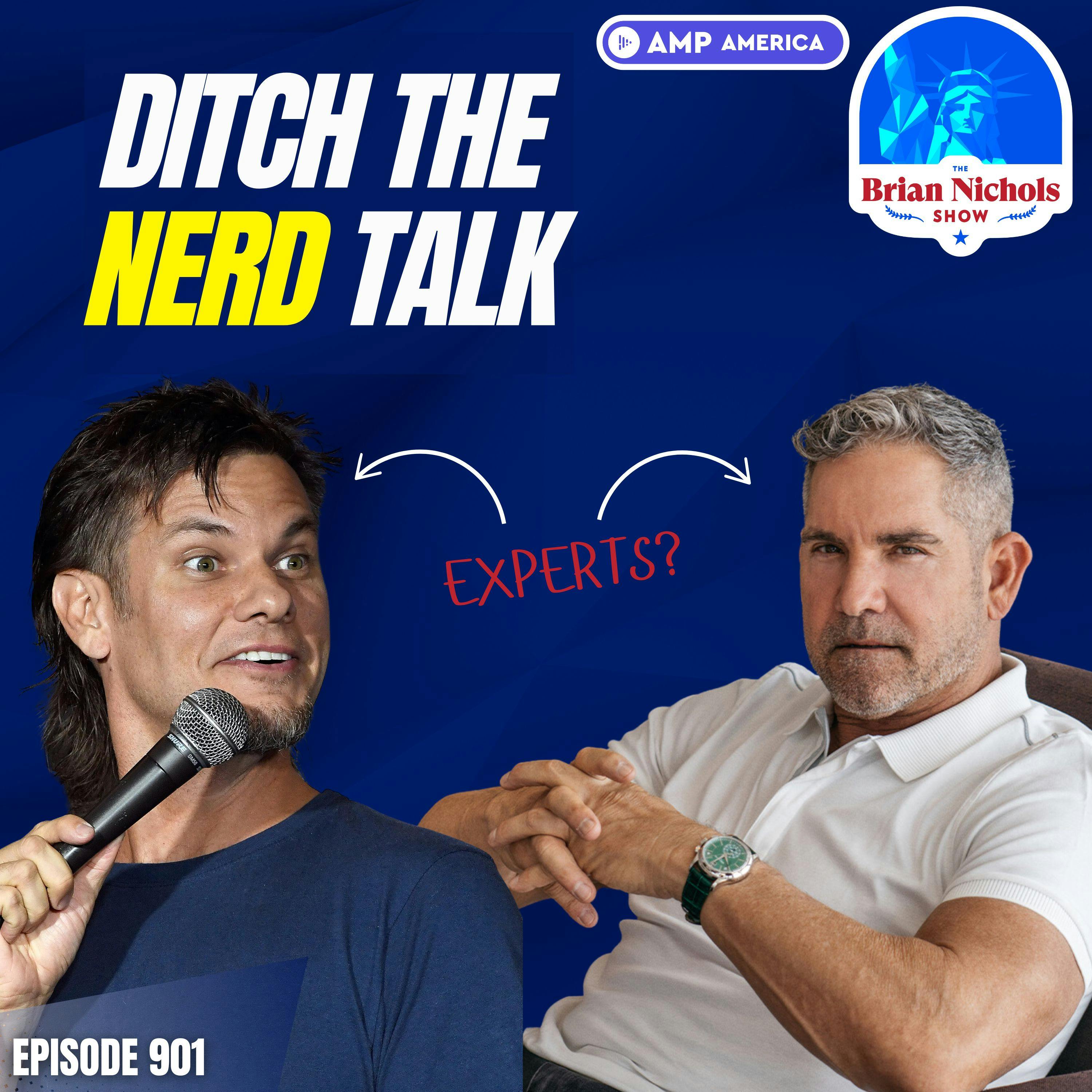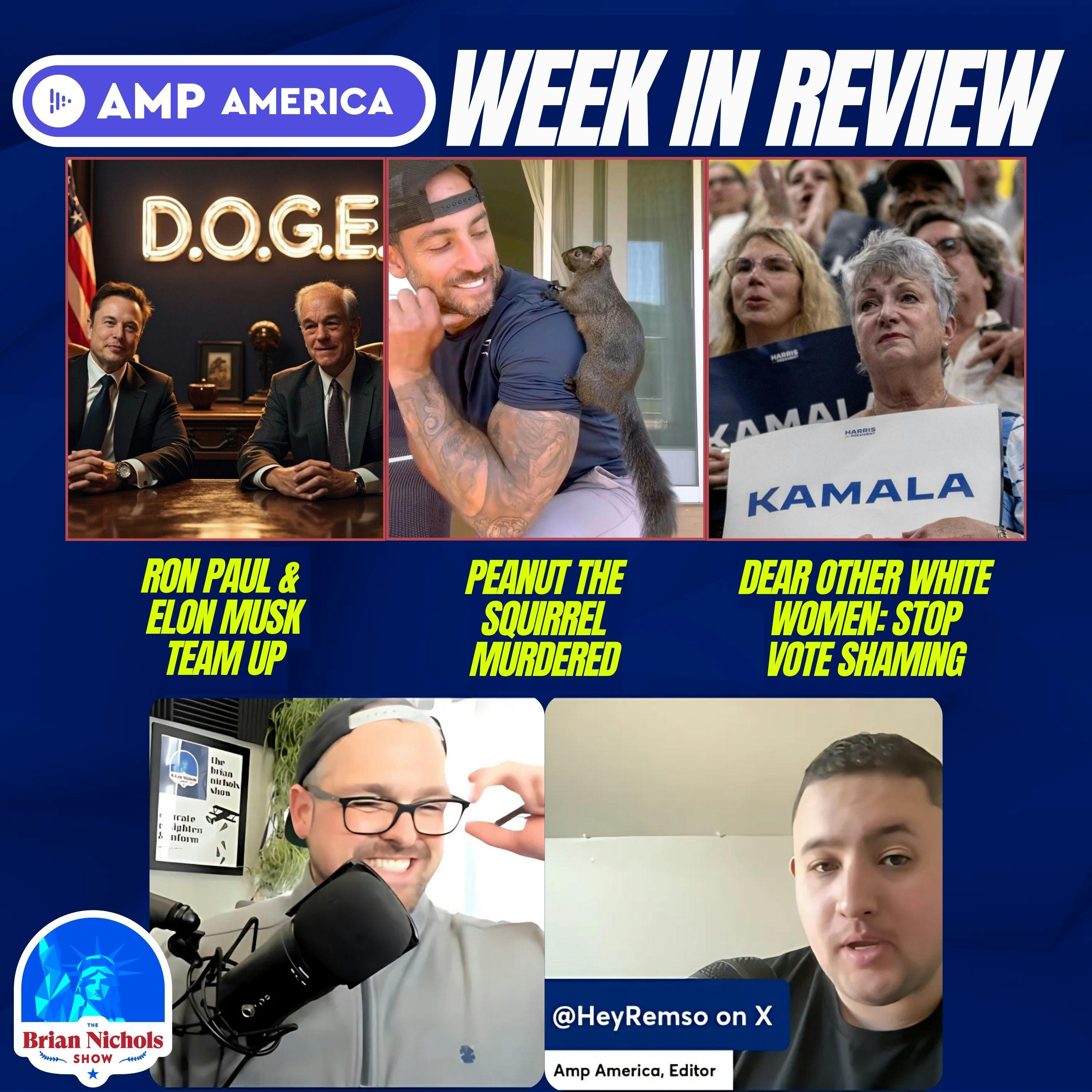309: Learn the Secret Cheat Code to Starting Killer Sales Conversations (feat. Brian Nichols)

Learn the tried and true secret cheat code I teach my team to start awesome conversations!
Learn the tried and true secret cheat code I teach my team to start awesome conversations, as today I'm going solo!
Today, we're teaching the importance of learning how to show your prospects:
Who you help.
How you help.
And who you've helped.
Then, we dig into the "And, But, Therefore" framing that turns a "good" start to a conversation into a "great" one.
Learn more about your ad choices. Visit megaphone.fm/adchoices
Studio Sponsor ➡ Cardio Miracle: Your health is an investment - NOT an expense. - 15%off using code TBNS at checkout
Support our Sponsors!
Support the program with a one-time donation or join our Patreon!
Take our audience survey for a chance to win a "Don't Hurt People, Don't Take Their Stuff" bumper sticker!
Well, Happy Wednesday there, folks, Brian Nichols here on The Brian Nichols Show. Hope you're doing well. And hope you had a great end of August. Happy September. What? It's September 1. And yeah, by the way, did you check out? I don't know if you heard we're doing the show. Seven days. A week. Yeah, that that's a thing that's happening. Yesterday, Jeremy Todd was on the program. He told some really fun stories, in terms of the stuff that might be missing right underneath your nose. So make sure if you didn't check out our brand new daily version of the show starting Yes, yesterday, you go back and check out that episode. And today Well, yeah, I promised a guest one Adam crigler. Unfortunately, we did have a couple issues there with scheduling also, I my brain just like turned into mush. When I was announcing him a couple of shows back. Adams not a Bitcoin expert. I know he's part of the regular show. And instead, Donnie Gabbert, who is going to become in the show here on Friday, he is a Bitcoin expert, I just decided, in my mind to make them one person. But anyways, that being said, No guest today for the The Brian Nichols Show. Instead, you're going to have a one on one with yours truly. And we're going to show you kind of what I do with my sales team. And when we do the morning sales, huddle over The Brian Nichols Show every morning, around 6am or so Eastern, I am firing out a quick morning email to my email subscribers, and also those who have signed up for our eBook The four easy steps you can implement now to help sell liberty to friends and family. If you sign up for that ebook. Yes, you did get entered there to get the amazing brand new morning sales huddle, and I guess it's Britain not really brand new. It's like two months now, we but we've been going actually went back and deleted some old emails. I was like, oh, wow, we've been doing this for quite a while. At this point. I saw a lot of old Brian Nichols Show one. So anyways, with that being said, what I want to focus on today is your cold call, right? Like now, your cold call. This is fun, because this is this is the day job, right. And then when I'm training my sales team, what we're talking about when we're cold calling is, is could be on the phone, it could be in the world of politics, or the world of trying to change hearts and minds. Just an initial conversation with a friend that I guess it'd be a little bit more of a warm call, right. But at the end of the day, there are a couple of underlying things that the person you're speaking to, wants to know. And there's three of them. So do this myth share our awesome trusty screen of justice and truth. Number one, folks want to know
who
you
help. So why do they want to know who you help? Why is that important? Well, first, they have to make sure they can see themselves being the person that you can actually help. Right, you have to help paint that picture. So we talk about this a lot in sales, your buyer persona, your verticals, who it is that you're not only going after, but the specific person that you're talking to? Who is it that you're helping number two? Oh, did twice There we go.
How
you help?
How you
help no grammar, Lee's trying to correct me there? How you help. So this is where we can start to paint the picture, in terms of what is it that we do? What value do we bring to the table? What problems do we solve and this is the other important part is that it doesn't matter how great your solution is, if there's not a problem you can identify or a problem that people can identify that need solved. In some time, it's on you to help show them hey, here's a problem. Let's focus on this problem. Show them that the problem that has been there in their entire life, the thorn in their side that they thought was just normal, and it can be removed. So how you help. And then number three, how there we go, how you've helped, past tense how you've helped. So this is telling a story. This is showing that you've done this in the past, and it's explaining the person that you helped, that should be like them, similar buyer persona with similar vertical, how you've helped similar to the problems that you should know, right? Or at least should know that people like them are experiencing challenges that companies like them are facing, and then tell the story of how you actually accomplished that. That's different than just talking about how great liberty is. Right? Or just how great your product or service Now, is everybody doing this? No. But that's why we need to do this. Because this is what works in the real world, right in in the private sector where you don't have government to decide winners and losers, it's you creating value and people not just seeing that value. But saying, Yes, I'm willing to give something right. I'm willing to give a cost, what's the price that this is going to cost? And there's a lot to that. We talked about this in the morning sales letter, a couple of a couple of emails back, right? What's, what's that, that timeframe, that that, that from when you actually make the decision that you're going to start looking at options, the energy, the time that you have to invest in not just looking at those alternatives, but then actually making that switch, and will actually help. That's why it's important to show the how you help. So then let's go to the next part. So this next part is when we're framing the actual verbiage in a sentence. And I like to call this the end. But therefore, approach, everybody who's listening to the show, I'm typing this. So if you want to see this version of the program, it's available over on YouTube. So it's on the screen, but the and but therefore approach, so let's give an example. Okay, we'll use the the industry that I call into my industry right now for my company is in the sales and support world is telecommunications in cybersecurity. So I'll give you an example. Looking at the people who we help, right, so let's use this example, our vertical is going to be just for the sake of this example, we'll say healthcare, okay. And then our buyer persona, we will say, more often than not set, let's say, a CIO, right, Chief Information Officer. So there we have the who we help. This is the people we help, how we help. How question mark, there we go, how we help. How we help? Well, let's just look at the case of healthcare companies. Well, right now, I know. And let's look at the problems that we know that they're facing cybersecurity attacks on the rise, you have personal private client information, you also have government regulatory bodies that oversee a bunch of different aspects of health care, you also have HIPAA compliance, these you have to make sure you maintain, if you are a hospital, you have all of the important operation tools that you need to make sure are maintained. Some of them use Internet services. So you have IoT Internet of Things, you have Wi Fi portals, you have guests coming in and out. So you want to make sure that your your land is in and also your win is protected from security standpoint. But also the you're gonna have enough bandwidth to support the the influx as technology grows, and you have more web based application. So there's a lot of problems that I know a CIO from
a healthcare company is going to be facing down the road, or right now, right, what the media immediate concerns, and that's where doing research doing the digging is important. So we're going to do that digging, we're going to do some, some research. So how we're going to tell in this case, we'll say help with cyber security. And we'll just say voice, or bandwidth. Go how we've helped. How helped question mark, tell a story. So this is where you go to your customer base. Now let's let's talk to your your Politico's out there, right, who's our customer base? Well, right now it's existing libertarians, right? If you're trying to get somebody to become a big ol libertarian, and telling them what the party is, but that's not what we're doing here. What we're trying to do is solve problems to the issues people face, right? So what we want to do is start to identify key problems that they are likely facing, and then tell a story of someone like them, who we've helped already. So let's tell a story. And I'll use a I actually have a company I've worked with in Delaware. So we'll say Delaware. Health care, health, I can spell health care company that I helped. Oh, I can't spell. I am the product of public education. That's what my grandpa used to say. He still said that. Don't worry, grep and nickels, your sayings are fun. All right. So let's just use this example. So I'm calling in to Bill Smith. Bill Smith. Isn't. He's a CIO at a large health care company in named state, Maryland. He's in Maryland. So Bill, hey, Bill, it's Brian Nichols calling from ABC Corporation. I catch it a good time. Great. Bill. Reason for my call. I've been working a lot with it executives, specifically CIOs in healthcare. So they're the who. And what I've been helping with has been, number one, helping retool cybersecurity infrastructure, but also helping retool voice and data infrastructure for an uncertain future. So there's that, how I help. I was actually just working with a few CIOs, specifically a CIO for a healthcare company in Delaware. And we ended up working with them retooling their cybersecurity infrastructure, because a neighboring and competing healthcare company had just got hit with a cybersecurity attack. And it cost them over $300,000 to remediate. So I want to see if it makes sense to have a conversation, to show how we went might be able to help you out as well. Sound fair. So we've gone through who we help, how we're helping them, and how we've helped someone like them. But let's take it a step further. let's implement now, the end. But therefore approach into this, because we can make that even better. So what we want to start out with is talking about what are usually the goals of the person we're talking to. Right now this is when you go from like the good, the good pitch to the great pitch. So what is it that a CIO wants to make sure they have happened? Well, based in my experience with people I've talked to in healthcare specifically, CIOs, is me talking to you guys. They know that they have a long term vision, they have to maintain, they have to coordinate with a variety of other C level executives. So it's like steering multiple ships toward the same direction. So they're looking for something to help make their lives easier, and to make the initiatives that they've been tasked with from other sea levels. Also easier. So if I can already start out my conversation, and that's what we're trying to have as conversation with this as likely the premise, they already understand that I know more than your average person, you just calling in and pushing a product, right? And that ends up pushing the features and benefits. Instead, what what am I doing? I'm going ahead and I'm starting to show I'm an expert. I'm branding myself by the questions I'm asking and the context of the question I'm presenting. So
we can say to them, hey, Bill, Brian Nichols calling from ABC Corporation. That gets it a good time. Great. Bill, I want to touch base. So I've been having conversations with CIOs in healthcare specifically. And there's the end, what I'm hearing is that they want to make sure that their strategic vision specifically from a cybersecurity, but also a business continuity, voice, and data perspective, is well planned for an uncertain future. But, and here's the conflict. Right, right. And the conflict then, but they're often faced, and this is where we can look for an objection. Right? Is that the the fun part? Because now we can almost block an objection before it becomes an objection. So instead of saying, you know, oh, the objection we'll get down the road, we'll face it, then. Let's think of the most common objections right now. I know, the main issue people are having is trying to get budgeting to work because of the uncertainties with COVID. How's it going to impact their fiscal year next year? They don't know. Does anybody really know? So what we can do is address that in the butt. But the problem they're finding is that other sea levels, specifically in finance, are having trouble with planning for budgeting. So they're not getting the needed budgets to achieve those strategic goals. So there's our conflict, therefore, resolution, right, therefore, they've been working With us at ABC Corp. And what we found is that they've been able to not only accomplish their strategic goals, but also address those budgeting concerns by finding more creative ways to accomplish and achieve the exact same solutions they are looking for, at a much more cost effective price, would it make sense to have a conversation to see if we can help you out as well? Right. So the different conversation to different approach to how we do things. Right, this net and I know, half of you in the politics world, which is almost all of you are like, Brian, what, how does this work? How does this apply to what we're doing here in the Liberty world? Well, I'll tell you how. Because just like, when I'm talking to my buyer, in this case, my prospect to the CIO, in the healthcare company, I need to know who I'm talking to, in politics, on the issues, that they care about the issues that specifically matter to them. What problems are they having? Not what problems do I think that they should be concerned about? Maybe that aren't directly impacting them, but they should they need to be aware? And they need to get outraged? None of that know, what specific problems do you have a solution for, that they are currently facing? That is who you're trying to address as your target market. And here's a thing that we need to kind of address as a movement. Not everybody is our target market. And elephant in the room, there are certain folks out there who are more our target market than others. And that's okay to acknowledge, we have to acknowledge that. If we don't acknowledge it, we're ignoring reality. And we're just going to be hurting ourselves going forward. So I'm going to encourage you to take what we talked about today, by talking about knowing how to have these conversations by presenting not only who you help, how you help, and how you've helped, but by also showing that you can ask those questions in the end, but therefore, manner, and really hit people where it matters in that emotion. Right. And we'll end with this. We know that facts don't care about your feelings. I've teased ben shapiro a lot recently. And I think it's because we see too often than not, people do revert back to this mentality that, well, we need to good idea people the death, and facts and figures people to death. But at the end of the day, facts and figures don't sell. See, we make our decisions based on emotion,
especially in the buying cycle. And then we rationalize after the fact, with those facts and figures. That's why it's important, because people make businesses arrangements with those that they know like and trust, right? Notice how the dollar amount, the features and benefits had nothing to do with who they do business with. Right? Just because you have the best ideas does not inherently mean that people are instantly going to be gravitating towards you. And until we acknowledge that, and until we know how to take these ideas that we have, and specifically enter into the markets that we need to address based on the issues that they see around them. Right? You want to talk about pro to a go talk about to pro pro to a to people who are having that conversation. But don't go into a complete, you know, a, you know, anti to a rally, and expect to be able to change people's minds unless you're going in and asking genuine questions and showing that you're genuinely curious, right going back to the ideas of empathy, as we've been talking about with our friend Jeremy Todd. So with all that being said, Yes, that's a lot to digest. So please make sure you hit the star button on your podcast catcher so that you don't miss this episode and it is stored there in your podcast feed to listen back to I think this is one of those episodes It will be great for just listening to getting better at and I will challenge you as we leave the episode today. What are you going to do to make yourself better the rest of this week? Right? I didn't expect to have a one on one with you today. But I know I asked you guys every single night at nine o'clock on Twitter. What did you do great today. What did you do great today. Why is that important? Because I don't want to foster that. This just constant negativity, constant berating constant going after other people constantly telling people what you're doing is a waste of time. No, let's, as I hit my mic, let's build up solutions and support and praise those who are going out and building solutions and are actively trying to be great. Let's encourage a culture of not just winning as spy co inputs, but a culture of greatness. Let's start showing that our ideas do win because they're great. And they're winning, and having success, because they're great. Let's raise that culture up. So, folks, if you enjoyed the episode, please go ahead. Give us a share. Find me at bead Nichols liberty. But with that being said, coming up on Thursday, I know what it's just so weird to have us having that many shows. But yes, Thursday, Jeremy Todd has returned to the program returning to talk, I don't know something sales. He always has a great conversation with you guys. And I say that after one conversation because he's Jeremy Todd. He's awesome. So with that being said, Thank you for joining us on our ad hoc one on one special so that being said, Brian Nichols signing off, you're on The Brian Nichols Show. We'll see you Thursday.
Transcribed by https://otter.ai




















